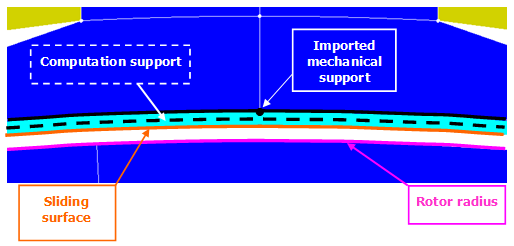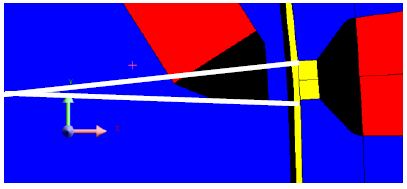Computation radius in airgap and slots opening angle
Computation radius in airgap: definition
The computation radius in airgap defines the support where the computation of forces will be carried out, before the projection on the imported mechanical support.
Computation radius in airgap: piece of advice
It is advisable to take a radius situated at a quarter of the airgap thickness on the side of the stator if the imported support is on the stator or on the side of the rotor if the imported support is on the rotor.
Example: support between stator and air
In the figure below an imported support on the side of the stator is represented, with the computation radius situated at a quarter of the airgap on the side of the stator.

Slots opening angle: definition
The slots opening angle is a parameter that must be defined by the user (see the figure below).
Introducing its value permits the software to take into consideration the existing forces on the portion associated to the opening angle.
Example: Slots opening angle for a computation on the stator side in 2D

If the user does not wish to take into consideration this portion for the computation support, it is enough to choose a null value of the slots opening angle.
Slots opening angle: optimal value
Once the computation with the slots opening angle is introduced, the optimal opening angle is calculated by the software and displayed in the computation box (see the image below).